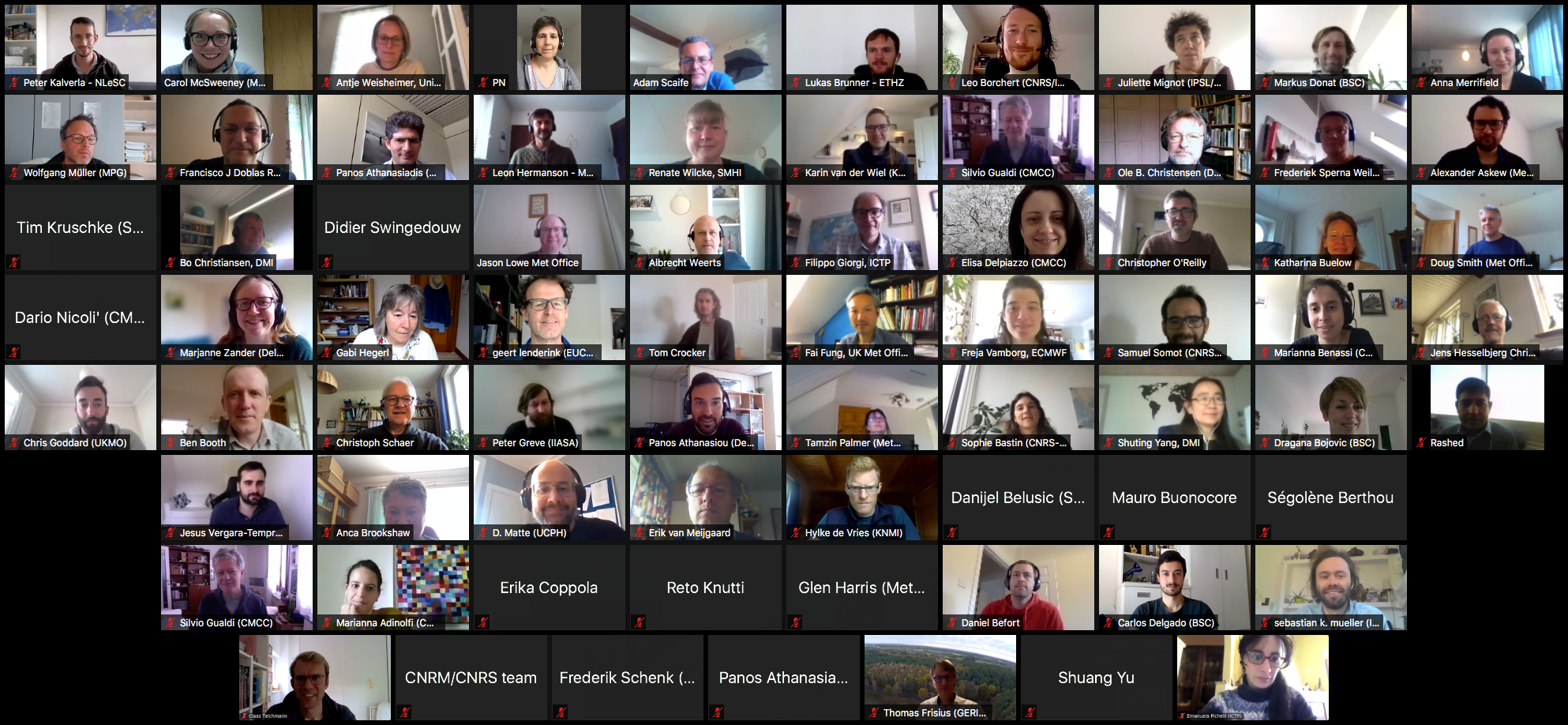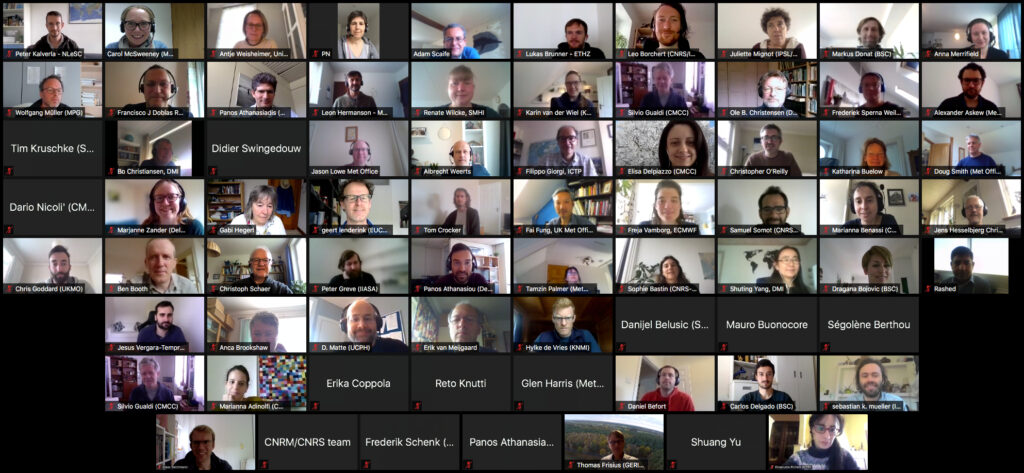Our fourth annual General Assembly (4th – 7th May 2021) came in a changed world. In the past year, remote meetings have become the norm, so unlike the 2020 General Assembly’s swift re-arrangement in response to the rapidly worsening COVID-19 pandemic in Europe, by 2021 we were all Zoom veterans. More than 70 of our EUCP colleagues tuned in across four mornings of talks and discussions.
Our first day began with an introduction to the Assembly from the Met Office’s Prof. Jason Lowe OBE (in which he said he might have preferred to meet in Barcelona rather than Zoom!), before moving into updates and highlights from each of the EUCP work packages.
Work Package 1 presented progress they have made on forecast quality assessment in multi-model ensembles, and on the impact of volcanic eruptions in the latest-generation CMIP6 climate models. Work carried out by CMCC on a decadal climate prediction system has developed into a climate service for the hydropower industry, while colleagues at IPSL have demonstrated how accounting for melting ice in Greenland improves the predictability of North Atlantic circulation. Numerous other advances and findings were showcased, concluding with the Met Office’s Leon Hermanson on his work as part of the WMO Lead Centre for Annual-to-Decadal Climate Prediction, establishing the chance of hitting various climate change milestones in the coming years.
Among the many highlights from Work Package 2, we heard about their work on CMIP6 climate models and how they present different predictions for Europe’s future climate from their predecessors, with much warmer summers predicted. We also heard from Anna Merrifield Könz of ETH Zürich on her work to produce actionable climate information by either weighting or sub-selecting climate simulations and identifying the best performers.
Work Package 3 closed the day, first telling us about their work improving the simulation of lightning in climate models, and on the changing structure of future winter storms, which are set to take on autumnal characteristics. They also shared their work on the overseas territories covered in EUCP, such as Réunion, and efforts to simulate hurricane tracks on the Caribbean. Emanuela Pichelli also discussed a major study into the benefits of high-resolution climate models in simulating future extreme weather, which we have covered extensively here (summaries for the two papers are available here and here, while a guest article on this work has also been published at Carbon Brief).
The second day of the General Assembly opened with an update from Work Package 4. Their work has involved working with simulations and analysis from Work Packages 1, 2 and 3, as well as extending their work to overseas territories. New modelling approaches were showcased which are useful for the wind energy industry, while several different hydrological studies were highlighted covering drought in wheat-growing areas, the impacts of future climate change on river basins and the risk of coastal flooding in the North Adriatic, including Venice. Advances in work on coastal erosion (which we have previously highlighted in a research summary) were also presented, expanding this research to the global scale.
Work Package 5 then presented their work on the merging of climate predictions and projections at different temporal scales. Various different ways of constraining these simulations are being considered, sharing knowledge with Work Packages 1 and 2. A particular change in North Atlantic circulation was presented as a new constraint on climate models which has proven promising in identifying better climate simulations. Work on merging simulations at different spatial scales has also produced exciting results, finding out how different users can benefit from this merging. Finally, work from the Met Office was presented on new climate storylines, useful tools to communicate future climate change to new audiences.
Our final Work Package update came from Work Package 6, who have been working with the users of EUCP science. They have been defining the documentation and reporting standards which will be of most use to users and which the other Work Packages can benefit from, ensuring the delivery of an authoritative climate prediction system. Work Package 6 has been engaging users from the beginning of the project, finding out how EUCP science can be made most useful to them. Work Package 6 held its first Multi-User Forum workshop in February 2021, and that has highlighted which types of data and services are most useful, and where more guidance is needed for end users. Work Package 6 is coming to the end of its user engagement activities and will begin defining the legacy of the EUCP project.
To hear about the discussions which followed on moving forward with our science and user engagement, please see Part 2 of our General Assembly 2021 summary.





 Funded by the European Union under Horizon 2020.
Funded by the European Union under Horizon 2020.